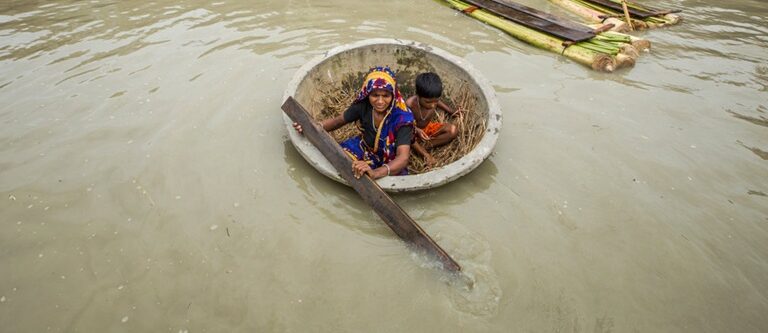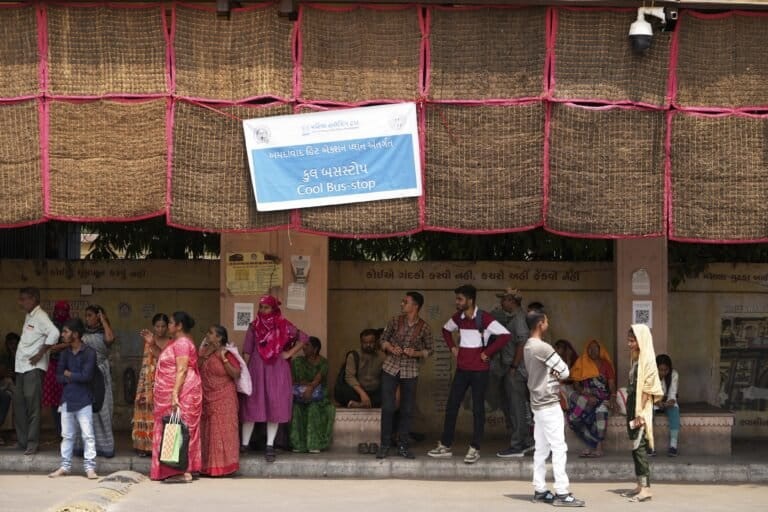- Delhi-based NGO Call for Justice, conducted a study on the implementation of Forest Rights Act across five states, and found varying gaps in implementation.
- Forest-dwelling communities who are not Scheduled Tribes found almost no representation in the several committees designed to approve claims for rights.
- Community forest rights lag behind individual claims for forest rights, the survey found.
The implementation of the Forest Rights Act has largely overlooked claims for community forest rights and is fraught with exclusionary practices due to misconceptions about its applicability, according to a new report. The report was published in March and conducted by Delhi-based NGO Call for Justice, with a committee chaired by former high court judge S.N. Dhingra.
The Forest Rights Act of 2006 (FRA), which came into force in 2008, recognises the historical rights that forest dwellers and scheduled tribes have over forest resources. However, despite being in force for over 15 years, strong implementation is still lacking due to knowledge gaps or conflicts of interest, says the report. Conducted by an independent fact finding committee, the report was submitted to the Ministry of Tribal Affairs last week.
Conducted across five different states representing diverse regions of the country, the report sought to identify “key issues and concerns” in the implementation of the law, which has seen a high rate of rejection among claims. It found that claims for individual forest rights were accepted more often than claims for community forest rights, and that district and forest officials continued to wield more decision-making power over the gram sabhas.
In a meeting on March 30, the Union Minister of Tribal Affairs, Arjun Munda, told the fact finding committee that the Ministry would examine the key recommendations of the report.
The FRA presents forest dwellers with the opportunity to claim community forest rights over 40 million hectares of land, according to some estimates. Based on data from the Election Commission from the 2019 general elections and the 2011 Census data, another group of independent researchers projected the implementation of FRA could be a voter issue in a third of constituencies, where tribal populations are high with potential to become right holders. India’s general election is scheduled to begin later in April.
Misconceptions and a lack of capacity
The FRA, known in full as the Scheduled Tribes and Other Traditional Forest Dwellers (Recognition of Forest Rights) Act, recognises individual and community rights of both tribes and other forest dwelling communities. Rights concerning self-cultivation and habitation are usually considered individual rights, while community rights include rights to graze and fish, access water bodies in forests, rights to community intellectual property and traditional knowledge, customary practices, and rights to regenerate, conserve or manage community forest resources for sustainable use.
Claimants who fall under Scheduled Tribes need to prove they have occupied the land before 31 December 2005, and other forest dwelling communities need to prove they have occupied the land for three generations, or 75 years.
The Act empowers gram sabhas to form Forest Rights Committees and determine the nature and extent of forest rights, pass resolutions on claims, and constitute committees for the protection of wildlife and biodiversity, among other responsibilities. Resolutions passed about claims are forwarded to a Sub Divisional Level Committee, which subsequently passes it to a District Level Committee for final approval.
The Call for Justice fact finding team, however, found that gram sabhas, Forest Rights Committees, Sub Divisional Level Committees and District Level Committees “generally lack the capacity to implement the FRA,” leading to “an ad hoc process for recognition of rights which is contrary to the provisions of the FRA.” The Committee conducted surveys and interviews in two districts each from the states of Maharashtra, Odisha, Karnataka, Assam, and Chhattisgarh.

In Assam’s Hailakandi district, for example, the report found that the district administration had directed claimants to the Block Development Officer to process their requests, which is not the process ordained by the FRA. The Maharashtra state government created an additional layer, the Divisional Level Committee, in areas under the fifth schedule of the Constitution, so that claims rejected by the District Level Committee could be appealed by the Divisional Level Committee. The report, however, said it “could not observe any tangible difference, so far as recognition and settlement of rights was concerned, after the setting up of the Divisional Level Committee. In almost all instances, it was noticed that Appeals were either kept pending or were sent back to the District Level Committee for reverification.”
In Odisha’s Kandhamal district, it was observed that what was counted as an approved claim by the administration was, in many cases, granted for only on a fraction of the land for which the claim was sought. This was a matter of concern because Odisha had a high rate of 72% when it came to accepting individual claims for forest rights, according to the Ministry of Tribal Affairs’ dashboard. In Chhattisgarh, the team found that even though community forest rights were distributed at a high rate (90%), individual forest rights were approved at only 52%. In the state’s Kanker district, they found several villagers were unaware of the FRA and the rights they were entitled to.
Karnataka had the lowest rate of individual forest rights claims granted out of the five states, at just 5%. “What is of concern is that even in instances where IFR has been recognised, the actual land allocated on an average is 0.8 acres, which is too small to eke out a livelihood,” the report noted.
“One of the most concerning things we found almost everywhere is that non-tribal forest dwelling communities, who have lived in these areas for generations, don’t find any representation in the committees under the FRA. We found that in most places, there is a misconception that the FRA is only for the Scheduled Tribes and not equally for these other communities,” said Ritwick Dutta, an environmental lawyer who founded the Legal Initiative for Forest and Environment (LIFE), and member secretary of the Call for Justice fact finding team. “The second big concern is that community forest rights make up a very small proportion of rights granted.”
The rules of the FRA make it mandatory for Scheduled Tribes to make up one third of the ten member Forest Rights Committee under the gram sabhas, but have no such mandate for the representation of other forest dwelling communities.
The report also made a case for jhum cultivation, practiced mostly in the northeast region of the country, to be recognised as a customary practice under the FRA. “Jhum is shifting cultivation, where communities move every five years. How can they prove they’ve been in the same area for three generations? The FRA needs to recognise this practice and include it within its purview,” said Dutta.
Maharashtra’s Gadchiroli district emerged as the best example for the implementation of the Act, where gram sabhas were empowered enough to act as a “body corporate” that smoothly resolved claims. In 2022, the district administration launched “Project Ekal” with the aim of strengthening the capacities of the gram sabhas to take responsibility for the implementation of the FRA. The job of informing the gram sabhas about their roles and responsibilities to manage claims lies with the Sub Divisional Level Committee, according to the rules of the FRA law.
However, even in Gadchiroli, the report found there was a reluctance among the higher levels of bureaucracy to grant community rights. “It was stated that the declaration of community forest rights in areas proposed for mining and other projects was deliberately not done in order to facilitate diversion of these areas for these projects,” it said, adding that such denial was in complete violation of the FRA.

Difficulties in implementing law
In 2016, a similar exercise assessing the impact of the FRA attributed its poor implementation to several factors, including an absence of political will at state and national levels, lack of effort to build capacity at the central level, and the creation of other systems that are in conflict with the FRA, such as joint forest management plans which give the forest department the power to manage forests. It also found that diversion of community forest resources continued to take place for development projects, without the consent of the gram sabhas.
Souparna Lahiri, senior climate and biodiversity policy advisor at the Global Forest Coalition, who was a member of the drafting committee for the FRA, said the strength of the law lay in the implementation of community forest rights. “The forest department and government bureaucracy are the biggest impediment to the implementation of the FRA because there is a desire to centralise control over forest resources. The FRA has tried to provide decentralised governance by conferring powers to the gram sabha, but this is not easily accepted because there is still this notion that forest dwellers are encroachers who will destroy the forest.”
In its recommendations, the report said there needed to be better coordination between the Ministry of Tribal Affairs and the Ministry of Environment, Forest, and Climate Change, particularly over the diversion of land over which community forest rights are being claimed. It also said application of the law in the northeast needs “special attention,” given the ethnic diversity region.

“There needs to be a grievance redressal mechanism if claims are pending with committees without resolution. More importantly, for a law like the FRA to work, there needs to be a complete decolonisation of forest governance,” Lahiri added.
The constitutionality of FRA was challenged in the Supreme Court by large conservation NGOs led by Wildlife First, who argued that the Act could lead to a land grab and violate other laws like the Wild Life Protection Act. During the proceedings in 2019, the Supreme Court ordered the eviction of millions of forest dwelling communities whose claims were rejected, before staying the judgment in light of widespread opposition. Another petitioner in the case, Wildlife Trust of India, later withdrew its name from the petition, saying it “recognises the rights and role of the indigenous people in wildlife and habitat protection.”
Read more: Community forest management linked to positive social, environmental outcomes: study
Banner image: Gram sabha meeting at Mendha Lekha, Gadchiroli district, Maharashtra. Photo from Wikimedia Commons.














